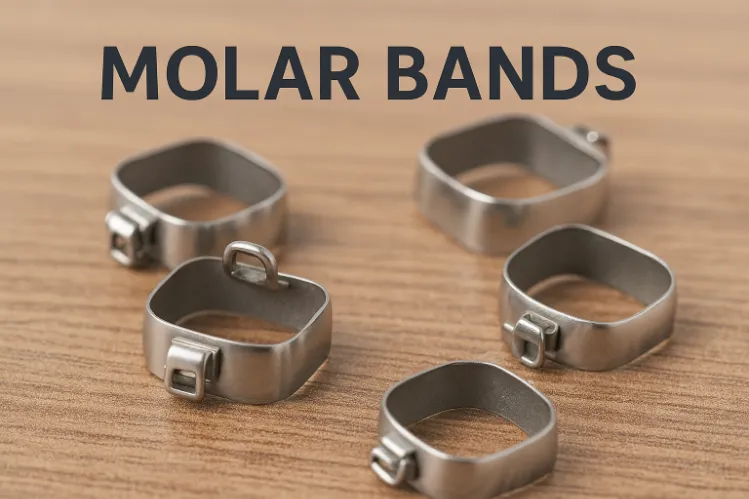
Table of Content
Prior to 1997, we wouldn’t have even been talking about removable clear braces time scales and whether they work faster than fixed metal braces because they simply didn’t exist. Instead, it was fair to say that patients had limited options when it came to ways to straighten teeth.
Of course one of the orthodontic methods that could always be relied on were fixed ‘bracket and wire’ style braces which as the name suggests, were attached to a patient’s teeth for the duration of a treatment using metal brackets and wiring. They had their advantages (and still do) but they also had their drawbacks.
A typical treatment, for example, takes around 18 months to 2 years to complete and even with modern technology and materials, this figure hasn’t changed much at all. It’s no wonder then that many patients have a love/hate relationship with their metal braces.
Then in 1997, things changed when Align Technology introduced Invisalign. This was the first removable aligner to take the world by storm. Often referred to as ‘clear braces’ because of their barely visible nature, they consisted of a series of BPA-free plastic custom aligners (or trays) which were worn over the teeth in sequence.
Moreover, each aligner is designed specifically to be taken out when eating or drinking which meant that finally, a patient wasn’t tied to their orthodontic appliance 24/7.
But herein lies the dilemma…
To answer the question “do removable braces work faster than fixed metal braces?”it becomes obvious that for each appliance to straighten teeth it actually needs to be in the mouth. This puts fixed metal braces at an unfair advantage or so you’d think because they remain in the mouth all the time.
In effect, provided that clear braces are worn in the mouth for somewhere around 22 hours a day, they can work considerably faster than metal braces taking anywhere between 6 -12 months on average to complete treatment.
So why is this?
To answer this question, we need to look at how clear aligners work…
To understand how clear aligners work it’s important to know that our teeth aren’t as rigid as you might think. Instead, each tooth is attached to a periodontal ligament – a movable fibrous-like connection commonly known as the PDL.
When we apply pressure to the teeth, surrounding cementum and jawbone react to the changing forces. When the PDL feels tension on the tooth, for example, it causes tiny deposits of cementum to be made in the bone.
Alternatively, when the PDL senses compression, it triggers resorption or dissolution of the bone. These opposing factors are happening constantly and are what maintains balance or equilibrium in the mouth.
What clear braces do is to take advantage of these natural processes by harnessing movement to manipulate the teeth. This is carried out using a series of aligners which apply exacting force across the teeth to move them into their new position.
Each custom aligner, for example, is designed to move a tooth approximately 0.25mm and after 10 days it’s removed and replaced by the next one in the series.This sequential process continues until the teeth have reached their final position.
In all honesty, not much… The prime difference, however, is that metal braces utilise a series of brackets and wires which are connected to each tooth individually. When fixed metal braces are manually tightened, the archwire tenses and applies pressure to an individual tooth rather than the movement of the teeth as a whole.
So where one-piece clear aligners can force tension as a whole, fixed braces can only do this individually. As such, even though the same results are achieved, in terms of clear braces time scale, invisible aligners can typically move teeth quicker.
But speed isn’t the only benefit of clear braces here in the UK…
Naturally, there’s the obvious benefit of discretion. Because clear aligners are practically invisible, people don’t even need to know that you’re undergoing teeth straightening treatment unless you tell them.
Then there’s the little matter of comfort…
Living with fixed braces can be problematic because of the number of brackets and wires that could rub on the tongue or cheeks. Conversely, there are no sharp or protruding parts to worry about when opting for clear aligners.
Finally, there’s the cost factor…
In many cases, clear braces in the UK can work out considerably cheaper than metal braces in a like-for-like treatment situation. You can find custom clear braces for just £625 from brands like Caspersmile. Patients can choose from affordable clear aligners designed to be worn in the mouth for 22 hours a day, or NightOnly clear aligners designed to be worn for 8-10 hours at night.
Removable clear braces can work just as fast as fixed metal braces for some people, they can work even faster, but it really depends on what needs fixing. They're great because you can take them out when eating or brushing your teeth. However, you need to wear them for the right amount of time each day for them to work properly.
Curated the best for your knowledge
 How Molar Bands Work in Braces and Retainers to Keep Your Teeth in Line
How Molar Bands Work in Braces and Retainers to Keep Your Teeth in LineIf you’ve ever started orthodontic treatment, you already know there are a lot of tiny pieces involved. Wires, brackets, elastics, retainers, attachments… and then there are molar bands. They’re not as famous as braces themselves, but they play a surprisingly big role in keeping your smile moving in the right direction. Some people don’t really notice them. While others desperately want to know why that metal ring is even there. So let’s break it all down: what molar bands are, why orthodontists use them, and how they work in both braces and retainers. Plus, what you should expect throughout the process.
Read More.webp) Dental Bonding Cost: Prices, Process & What to Know
Dental Bonding Cost: Prices, Process & What to KnowIf you’re thinking about fixing a chipped tooth, closing a gap, or smoothing out uneven edges, dental bonding is often the easiest (and quickest) way to do it. And honestly? It’s one of the most budget-friendly cosmetic treatments out there, if you know what to expect. But here’s the part everyone worries about first: “How much does tooth bonding cost?” The short answer: it depends. The long answer: let’s break it all down so you actually understand where the price comes from, what you’re paying for, and whether bonding is the right fix for your smile.
Read More.webp) Mouthwash for Gums: What to Choose & Why
Mouthwash for Gums: What to Choose & WhyYou know the feeling when your gums suddenly have a meltdown? A little swelling, a little bleeding, and you are down the rabbit hole on Google at 3 a.m., trying to find the best mouthwash for gums. It happens. Gums can be finicky little guys. They deserve some love, some care, and sometimes a splash of minty freshness. But not all mouthwashes are created equally. Some are just flavored water, acting like they are helping. Some are awesome "fight germs" formulations that your dentist wishes everyone used. In this article we are going to break down what’s is the best mouthwash for your gums.
Read MoreQuick Links

Heading